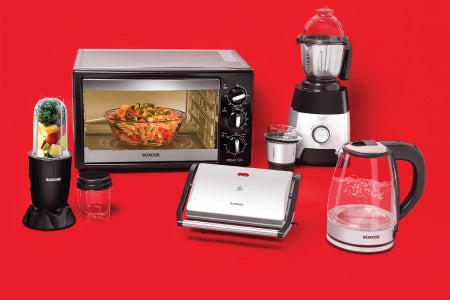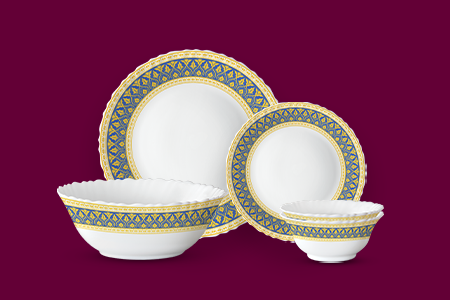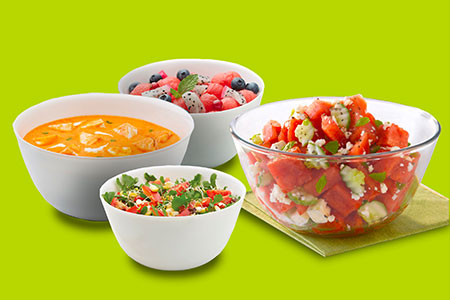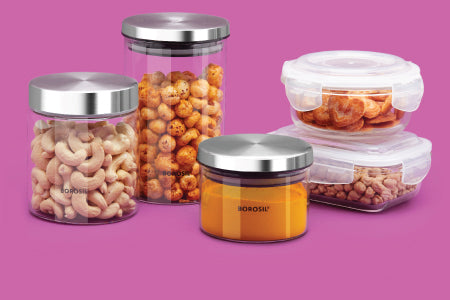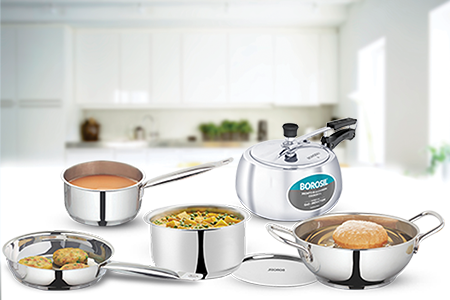
A Must Try Uttapam Recipe
Wholesome Uttappam Recipe: South Indian Delight on Your Plate
Food lovers! Assemble! We're about to dive into the world of Uttappam – a fantastic South Indian dish that's a bit like a pancake.
We'll show you a step-by-step Uttappam recipe and help you understand how to create this dish from scratch, including how to make the special batter and cook it to perfection. Plus, we'll share tips on how to make it your own by adding your favourite ingredients. Get ready to experience the incredible flavours of South India right in your own home. Let's get cooking!
Classic Uthappam Recipe
Uttappam will have a taste similar to Dosa but with a fluffier texture. Let's check out the recipe and learn how to make uttapam. This recipe serves around 4-6 people.
Ingredients Required for Soaking
• 1/2 cup husked whole urad dal
• 1/4 tsp methi seeds, also known as fenugreek seeds
• 2 cups parboiled rice or idli rice
• Water for soaking
For Blending the Batter:
• Rock salt (or as per taste, avoid adding salt in very cold temperatures)
• Sugar (if avoiding salt in cold temperatures)
Step-by-step Uttappam Recipe
Preparing the Batter:
→ Combine 1/2 cup of husked whole urad dal and 1/4 teaspoon of fenugreek seeds in a serving bowl. Alternatively, split-husked urad dal is a substitute for whole urad dal.
→ Rinse the urad dal and fenugreek seeds a couple of times in fresh water.
→ Then, soak them in 1 cup of water for 4 to 5 hours.
→ In another bowl, take two cups of parboiled or idli rice and rinse them a couple of times. Set them aside in a serving bowl.
→ Add 2 cups of water to the rinsed rice, mix well, and soak everything for 4 to 5 hours.
Making the Batter:
→ After soaking, strain the urad dal and reserve the water. Keep this water for blending or grinding the dal.
→ Use the wet grinding blade in the grinder or blender jar. Add the strained urad dal to the jar.
→ First, add 1/4 cup of the reserved water and blend for a few seconds. Then add the remaining water and continue mixing until the batter is light, smooth, and fluffy.
→ If your blender starts to get too hot while you're blending, just take a break and let it cool down before you continue. The amount of water you need for blending depends on how fresh your urad dal is. Generally, you can use 1/2 cup of water to blend 1/2 cup of urad dal.
→ Transfer the urad dal batter to a spacious bowl. The batter should exhibit a fluffy, silky, and airy consistency.
→ To the same grinder jar, add half of the strained rice. Add 1/4 to 1/2 cup of water and mix until smooth. A slightly grainy texture in the rice batter is acceptable. You can blend the rice in two to three portions.
→ Add the rice batter to the bowl with the urad dal batter.
→ Add 1 teaspoon of rock salt. Do not add salt in cold temperatures. Instead, you can add 1/4 tsp of sugar. It will fasten the fermentation process.
→ Mix both batters well with your hands or a spoon or spatula.
→ Cover the bowl with a snack plate and allow the batter to ferment overnight for 8 to 20 hours. The fermentation time will vary depending on the temperature conditions in your city.
Final Steps:
The next day, the batter will have fermented. It will increase in volume and become double or triple its original size. Additionally, you'll notice numerous small air pockets within the batter, accompanied by a delightful sour fragrance.
Lightly stir the batter. Check the consistency. If the batter looks too thick, add about 1/8 to 1/4 cup of water or more if required. Mix well.
That's it, and the batter is ready to cook.
Rava Uttapam Recipe
Rava Uttappam is another well-known variety of Uttappam. Let's check out the recipe.
Ingredients Required for Rava Uttappam Batter:
• 1/2 cup fine variety of rava (semolina), not roasted rava
• 1/2 cup water
• 3 teaspoons lemon juice
• Salt to taste
• 1/4 teaspoon baking soda or 1/8 teaspoon eno (fruit salt)
Step-By-Step Rava Uttapam Recipe
→ In a bowl, take 1/2 cup of a fine variety of rava (semolina), ensuring it's not roasted rava.
→ Add 1/2 cup of water to the rava.
→ Mix the rava and water thoroughly, ensuring no lumps, and then allow the batter to rest for 20 to 30 minutes. You can even leave it for an hour during this resting period.
→ After 20 to 30 minutes, give the batter another good stir. The rava will have absorbed the water at this point, causing the batter to thicken.
→ If the batter appears too thin, add a few tablespoons of rava to thicken it. → Conversely, if it's too thick, add a few tablespoons of water to achieve the desired consistency.
→ Add 3 teaspoons of lemon juice to the batter for a delightful tangy flavour.
→ Season the batter with salt according to your taste and mix it thoroughly.
→ To make the Uttapam light and fluffy, add 1/4 teaspoon of baking soda or 1/8 teaspoon of eno (fruit salt). If you prefer a slightly denser texture, use 1/8 teaspoon of baking soda instead.
→ Stir the batter vigorously again to ensure all the ingredients are well combined.
→ Now, your Rava Uttapam batter is ready for cooking. Adding toppings such as chopped chilli, tomato and onion, or plain Rava Uttappam also tastes good.
How to cook Uttappam?
Cooking Uttappam follows a similar process as cooking Dosa. We will look at the steps.
→ Take a Non- stick Dosa Tawa and heat it in a medium flame.
→ Once the Tawa is heated, grease it with oil.
→ Stir the batter with a ladle.
→ Pick the ladle full of batter and pour it on the Tawa.
→ Don't rub the batter all over the Tawa.
→ Make sure that the batter is round and fluffy.
→ Pour the oil in the corners evenly with a spoon.
→ Flip the Uttappam and let it cook on the other side for a minute.
→ You can add oil on the top. It's optional.
→ Take out the Uttappam using a Dosa Turner and serve it on a breakfast plate.
→ If you plan to make Onion Uttapam, it's even simpler. Chop a few onions and add them after pouring the batter on the Tawa.
Conclusion
In conclusion, making Uttapam is a very simple process. Focus on the ingredients and fermentation. Allow the batter to ferment well, as there lies the taste and texture of Uttapam. You can also add ghee instead and sprinkle some chilli powder on the top. Serve it with chutney and sambar for an authentic South Indian touch.
Frequently Asked Questions
1. Is Uttapam healthy or unhealthy?
Uttapam is an excellent option for individuals aiming to shed pounds, given its low fat and calorie content. Its nutritious carbohydrates provide a consistent, sustainable energy source, enhancing mental clarity throughout the day.
2. What is the difference between Dosa and Uttapam?
Dosa and Uttapam are very similar in taste. But, the main difference lies in fermentation. Also, Uttapam is much thicker than Dosa.
3. Which can I serve with Uttapam?
Uttapam tastes best with coconut chutney, onion tomato chutney, idli podi, and tiffin sambar.

